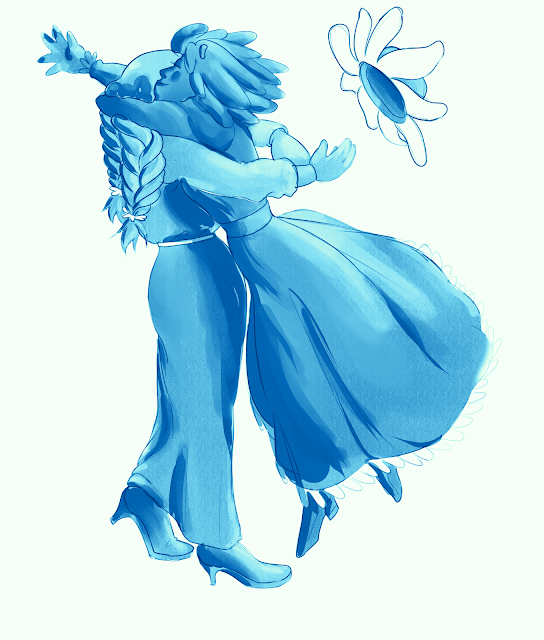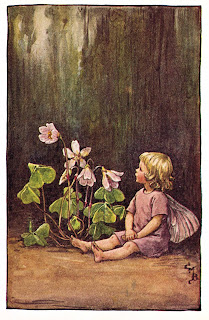25/10/20 update
I've had some technical issues in the past week. My tablet pen broke so I needed to get a new one. Also, I was struggling a bit with what I should do next but I got an idea once my new pen came in.
Basically, what I've done is drawn a couple of my flower characters in poses with a particular emotion expressed. I then used gradient maps to change the colour palette to see how colour effects how the emotion is read.
Pose 1: Clover and chamomile (Happiness/Joy)
 |
Pose 2: Asphodel (Sadness/Remorse)
My main take away from this experiment is that colour does little to effect the emotion of the image in of itself. Firstly, there's things like saturation and brightness. For example, red is typically associated with intense emotions but I can adjust how intense it feels though saturation levels. Also, I need to take into account context of the image. Colours are strongly symbolic of certain emotions but what symbolism you want is largely based on context. Like green is commonly associated with wealth, nature and sickness: all completely different meanings. How you use the colour is just as important as the colour choice.
A couple lines in the paper stood out to me: "She enjoyed no freedom in her pretty pot..." and "The wordless language of flowers was not just the most suitable form of expression for meek and silent ladies, the ornaments of every gentleman’s house.".
The idea that flower language was for women is something that's interesting to me. It was a way for women to communicate while still in keeping with traditionalist norms of a woman's role in society. However, I can't say that I think its use is feminist though because it panders directly to those traditionalist norms instead of challenging them. It emphasises the connection between women and nature. Nature is viewed as something pure - read virginal - and sinless, for lack of a better word. This concept is particularly emphasised in domestic flowers where the plant is confined to it's space in the home and can't grow free. Much like women were in the 1800s, a flower in a plant pot is meant to be viewed and admired for it's beauty and nothing else. The flower may have value in bringing comfort and companionship to the other members of the household, but can't express themselves in ways that betray their beauty and purity.
While these social ideals are not as enforced anymore thanks to feminist movements in the 1900s, they are still prevalent in more traditionalist circles worldwide.
Applying this to my project, I think I want to challenge the concept of purity in women and their association with nature. I could do this though a series of illustrations showing my "flower women" in a variety of emotional states. Anger, sadness, joy: I want to draw women who are passionate, scarred and all things in-between and beyond. I'll use flower language to show the variety of a woman's character, not just the standard of norms from days gone by.














Comments
Post a Comment